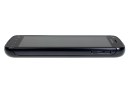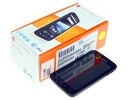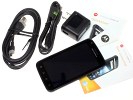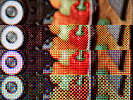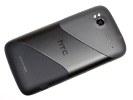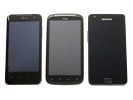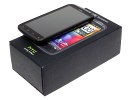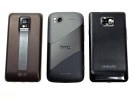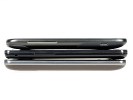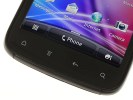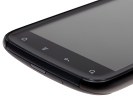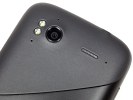It looks like the point where it all ends. A galaxy outgrowing its own limits. An explosion of energy and speed. An overdose of smartphone power. A phone that makes you love the smell of Android in the morning. The likes of Samsung I9100 Galaxy S II make it easy to get carried away. But wait a minute. There’s nothing quite like the Galaxy II. The brightest stars on the smartphone scene have graced our homepage, but this one is trying to eclipse them all. The Samsung I9100 Galaxy S II is in no mood to share – the spoils or the spotlight. With a spec sheet like that, it’s a beast of a droid. Even in today’s viciously competitive market, the Galaxy S II has so many firsts to be proud of. Samsung’s very own Exynos chipset, the unmatched Super AMOLED Plus screen and the ultra-slim body only begin to tell the story. With manufacturers busy making facelifts and sequels to get our hard-earned cash, we are often wondering if an upgrade is worth it. Well this time, it takes but a glance at the specs to tell that the answer is yes. You’ve got a problem with the PenTile matrix of the original Galaxy S – the Galaxy S II is here to fix that. Or was it the laggy RFS file system bothering you? Well, be our gest and enjoy it the EXT4 way. The GPS issues or the lack of flash for the camera too much for you to handle – they’ve got it all fixed here. But fixes are just the beginning and they come to show that Samsung has listened to the customers. The key selling points of the Galaxy S II will most certainly be the impressive 1080p video recording, better still photos and, probably most important of all, the new Exynos chipset that powers the whole thing. You get an extra core, higher clock speed and the new Mali-400 GPU that’s supposed to blow everything we know out of the water. Not to mention the sweet gig of RAM to make sure that multitasking is a walk in the park for the Galaxy S II. Samsung has managed to fit the I9100 Galaxy S II in a pretty compact box. To an extent that you’ll be unprepared for the actual size of the phone inside. The bundle includes a charger, a one-piece headset, a microUSB cable and a quick start guide. That’s all the basics covered, considering that the device offers ample storage out of the box. However, Samsung will still ship its flagship with an 8GB card in some markets taking the initial storage to either 24GB or 40GB. Not bad. The bad news is that the MHL adapter required for HD TV-out and the USB adapter enabling the USB host functionality aren’t included. It’s a real pity – both work pretty well but many users will probably not bother purchasing them and won’t get a chance to try them.
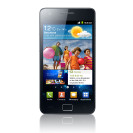
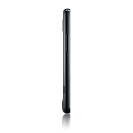
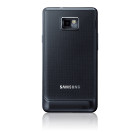
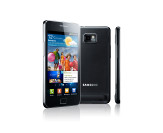
Samsung Galaxy S II official photos



Samsung Galaxy S II official photosKey features
Main disadvantages


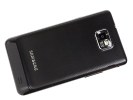
The Samsung I9100 Galaxy S II at ours
Unboxing: a few more accessories would have made a good box perfect
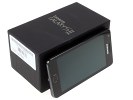
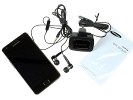
The Samsung I9100 Galaxy S II retail package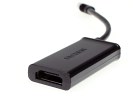
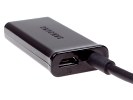
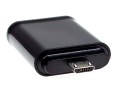
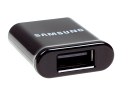
Unfortunately, the USB host adapter and the MHL adapter are purchased separately
Design and display
With a hint of a chin at the back, and a hardware menu key flanked by a couple of touch-sensitive buttons the Galaxy S II does bear resemblance to its predecessor. However the slimmer bezel around an even more impressive screen does take looks a level up.
The weight is also kept impressively low – at the mere 116g, the Galaxy S II is 3 grams lighter than the original Galaxy S.

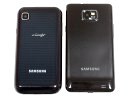
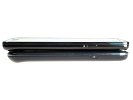
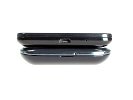
The Galaxy S II sized up against the original Galaxy S and the iPhone 4
The back has also been improved with the glossy blue-dotted plastic replaced by the finely textured surface we’ve come to know from the Samsung S5830 Galaxy Ace. This particular finish is practically immune to fingerprints and quite pleasant – and secure – to hold.
Some metal on the body might’ve suited the flagship but, since it would’ve upped the weight, we are willing to live with the second best option.
Besides, no matter what finish the design team would have come up with, all eyes would always be focused on the 4.3” Super AMOLED Plus screen anyway. It retains the WVGA resolution of its predecessor, but uses a conventional matrix with three-subpixels per pixel instead of the PenTile matrix of the first-gen Super AMOLED displays.
PenTile screens were often criticized for lacking in sharpness, due to the lower number of total subpixels, but the truth is that the change is hard to notice. Of course, if you look close enough you’d be able to tell the two apart, but in everyday usage the difference is subtle at best.


Samsung I9100 Galaxy S II screen compared to the Galaxy S display
However the added screen estate does make a big difference: an already impressive display has become superb. Just place the two Galaxy phones side by side and you will clearly see what you are gaining with the new one.
You can now enjoy the deepest blacks on the market on a surface over 15% larger. Contrary to Samsung claims though, the brightness doesn’t seem to have improved – an observation that our display test confirmed.
| Display test | 50% brightness | 100% brightness | ||||
| Black, cd/m2 | White, cd/m2 | Contrast ratio | Black, cd/m2 | White, cd/m2 | Contrast ratio | |
| LG Optimus Black P970 | 0.27 | 332 | 1228 | 0.65 | 749 | 1161 |
| LG Optimus 2X | 0.23 | 228 | 982 | 0.35 | 347 | 1001 |
| Sony Ericsson XPERIA Arc | 0.03 | 34 | 1078 | 0.33 | 394 | 1207 |
| Samsung I9000 Galaxy S | 0 | 263 | ∞ | 0 | 395 | ∞ |
| Samsung I9100 Galaxy S II | 0 | 231 | ∞ | 0 | 362 | ∞ |
| HTC Incredible S | 0.18 | 162 | 908 | 0.31 | 275 | 880 |
| Apple iPhone 4 | 0.14 | 189 | 1341 | 0.39 | 483 | 1242 |
| Motorola Atrix 4G | 0.48 | 314 | 652 | 0.60 | 598 | 991 |
It doesn’t matter all that much though – the Samsung I9100 Galaxy S II screen remains perfectly visible in all lighting conditions. Bright sun or not – you will always be able to read the display without losing too much color either. The AMOLED screens are known for wide viewing angles with no loss of contrast or color distortion well into near extremes. There isn’t much to say about screen sensitivity either – Samsung sure knows how to make a good capacitive unit. We are pleased to report that the green tint that was a common complaint on the original Galaxy S is gone in its successor. Now colors still aren’t perfectly accurate, but are more than good enough for most practical purposes. Another criticism against the first Super AMOLED screens was color saturation. There didn’t seem to be a general consensus on that matter – some loved it while others thought it was too much. Well, Samsung obviously paid attention and did the best that could be done in the situation – they gave users a choice. The Samsung I9100 Galaxy S II has a new screen setting called Background Effect. It lets you adjust saturation with three available modes: dynamic, standard and movie in descending order of color intensity. The final key asset of the Super AMOLED Plus display is its power efficiency. Being able to turn individual pixels off, those screens don’t need all the backlighting all the time and thus consume less energy, especially when darker themes are used. All in all, Super AMOLED Plus screens and mobile phones are really meant for each other. It’s a perfect match that reveals all the strengths (unrivaled image quality, perfect viewing angles, energy efficiency and great sunlight legibility), without suffering the traditional OLED weaknesses (higher production costs for larger units and shorter life). We really can’t see any other screen on the market that could come close to the brilliance of the Galaxy S II unit, save for Samsung’s own Infuse 4G, which packs an even larger (4.5”) Super AMOLED Plus screen.




Samsung I9000 Galaxy S (left), LG Optimus Black P970 (middle) and Samsung I9100 Galaxy S II (right) screens side-by-side
Dr Mobiles Limited
1 Huron Street, Takapuna, North Shore 0622
Tel: (09) 551-5344 and Mob: (021) 264-0000
Web - Map - Email - Posterous - Twitter - Blogger - Flickr
Please note that Dr Mobiles Limited is the only professional phone repair laboratory who DOES NOT charge inspection fee for looking at your damage phone. It is simply if we can fix your damage phone or not. No point of adding burden to our clients!
Besides that, we are able to repair your Apple iPhone 4, 3G, 3GS while you wait at our laboratory! Just call (09) 551-5344 for booking.






